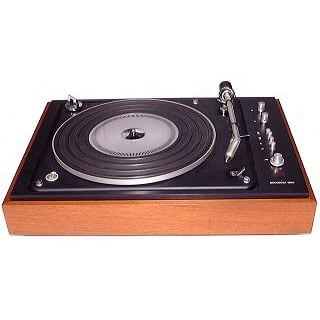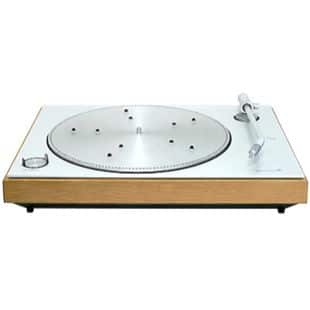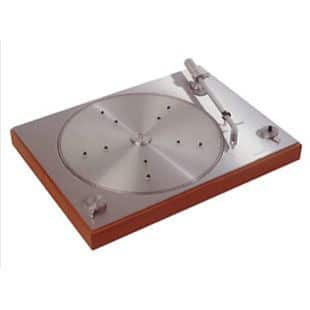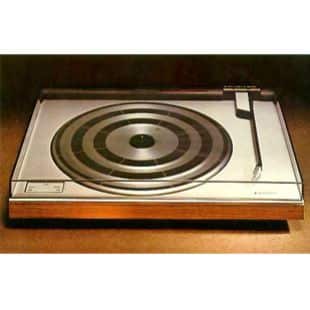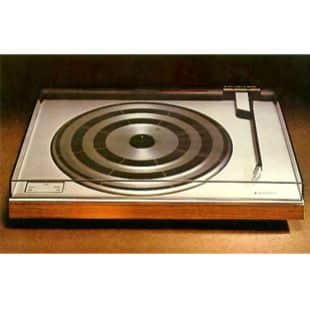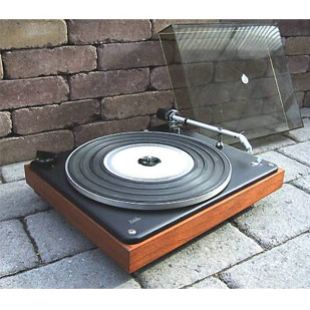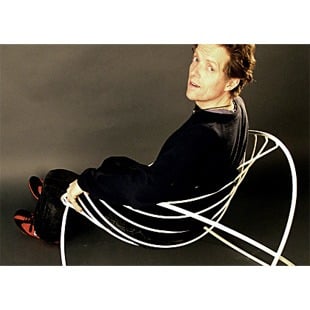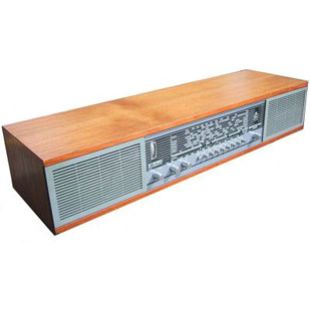Sørig Thomsen Design has produced a wide range of telephone products for Bang & Olufsen. BeoTalk 1100 is just one of them – an answering machine of the highest quality, in contrast to many of the cheap models imported from the Far East. It can be placed on a table or desk, or mounted on the wall. Like so many other Bang & Olufsen products, its functions are divided up into primary functions, which are visible all the time, and secondary functions, which are concealed behind a panel, and are only for ‘special occasions’.
Thomsen studied social sciences, built houses and looked after the gardens on the roof of the Danish central bank before becoming a designer at Bang & Olufsen.
“I suppose I’m an unusually typical example of the generation that was young at the start of the 1980s” he says. “We didn’t really know what it was we wanted to do so we ended up dabbling in all sorts of things. As I see it, that mix of the practical and the intellectual made us more rounded people.”
Thomsen himself swapped a place at Aalborg University for a carpenter’s workbench. After a few years building furniture and houses, he hung up his hammer and did a brief stint as a gardener on the roof of the Danish central bank before coming back down to earth to spend the money he’d earned on a cycling trip from Lisbon to Denmark. In 1990 he headed instead for the Danish School of Design in Copenhagen and it was while he was studying there that he convinced Telecom to take him on for work experience.
“We went to Bang & Olufsen on a study visit” says the 37 year-old from Northern Jutland. “We had a look round Telecom too and that’s where I got the idea of asking for a work placement.” A blessing in disguise.
Today Thomsen has his own Design Studio in Århus, Denmark’s second city, but most of his time and energy is devoted to projects for Bang & Olufsen Telecom and Bang & Olufsen Technology.
The fact that there was no computer available for the placement student when he arrived may well have been fortuitous. It meant that Thomsen spent most of his time working with physical models in the model workshop, converting pencil strokes into three-dimensional solutions. He now works in wood, foam and ‘Cibatool’: a professional modelling material.
“I like working with models” he says, “which could be because I have a practical approach to the subject.”
Even during his three-month placement he tried his hand at various projects, his first being the BeoCharger for the BeoCom 9500, created in the Telecom workshop. Apart from the materials, it ended up looking almost exactly like Thomsen’s first sketch. During his placement he also designed various telephone accessories. Completely afresh.
When his five-year course at design college came to an end, Thomsen was contacted by Bang & Olufsen design and concept manager Ole Mølbjerg who was keen to take him on to work on a new project. Mølbjerg has been Thomsen’s mentor for every Bang & Olufsen project he has worked on since. The first was the BeoTalk 1100, which, to begin with, wasn’t even a clearly-defined product.
“It was exciting because with this product there were no preconceptions,” says Thomsen. “There was no archetype which you could put in front of you and say ‘This is what an advanced answering machine should look like’. It left the field wide open to invent a whole new language of design.For me it’s important that the design illustrates what the product can do. It’s about using design as a language, which also makes the product easier to use.”
Development projects are run by groups of audio experts, designers and software developers:
“It’s an exciting process which is all about daring to be honest with each other – taking constructive criticism on board is the key to obtaining the best results.As I see it, products should have a kind of poetry to them,” continues Thomsen, “but I know full well that it’s not something a designer can just decide. It’s up to the owner to see the product as something poetic – all I can do is hope that it happens.”
Ideally, poetry is expressed by the products being able to speak for themselves, conveying in a simple way what they contain and what they do.
“I think that my generation, which has now grown up into potential purchasers, is making greater demands in terms of the real content of products. They have to be environmentally friendly and speak to our aesthetic sense and our intellect.”
Thomsen thinks it’s important for Bang & Olufsen’s products to retain the universal values inherent in the marriage of functionality and design – a marriage which is both ahead of its time and rooted in history.
“So it’s important to me that the products which are created are made well, and are beautiful and functional.” At the same time, the quality of Bang & Olufsen products is also part of thinking green, because a long product life helps to limit the consumption of resources – a factor which Thomsen believes consumers will continue to demand in the future.
Thomsen has also worked on the BeoCom 6000, BeoCom 9800 and BeoCom 4. Besides telephones, he has also had projects for Technology and designed kitchen equipment, furniture and speakers for another manufacturer. Not bad for someone who became an internationally recognised, prize-winning designer almost completely by accident


